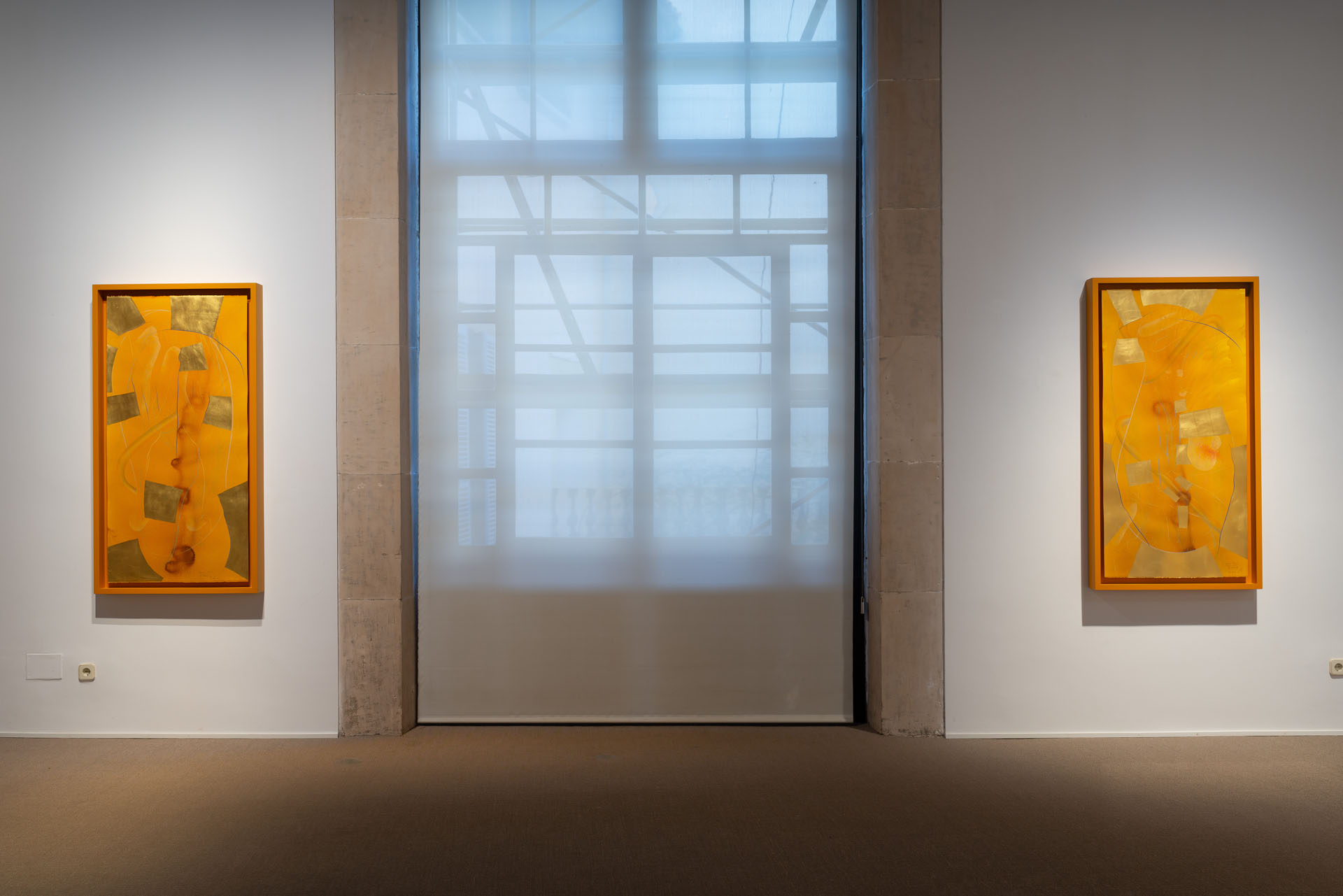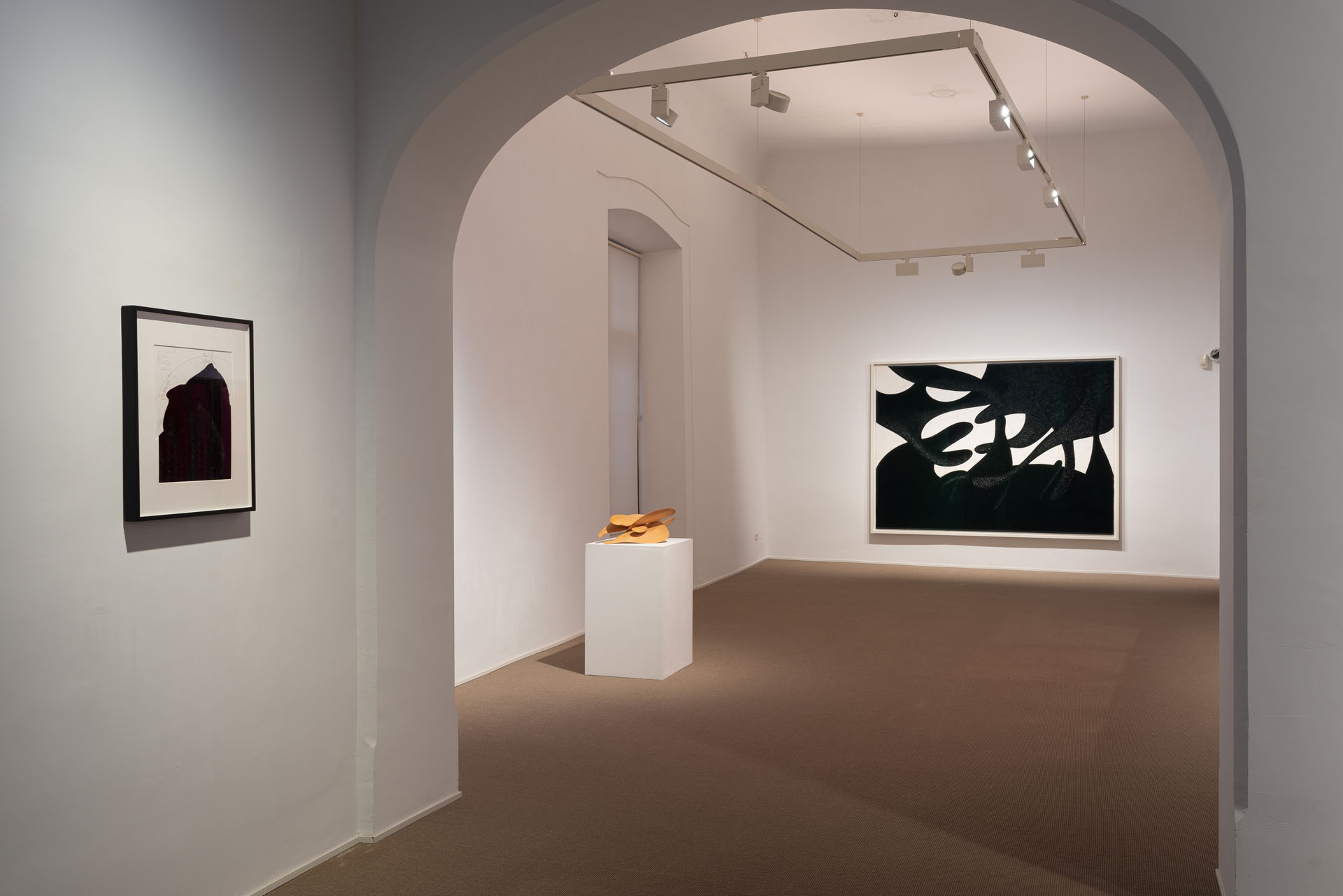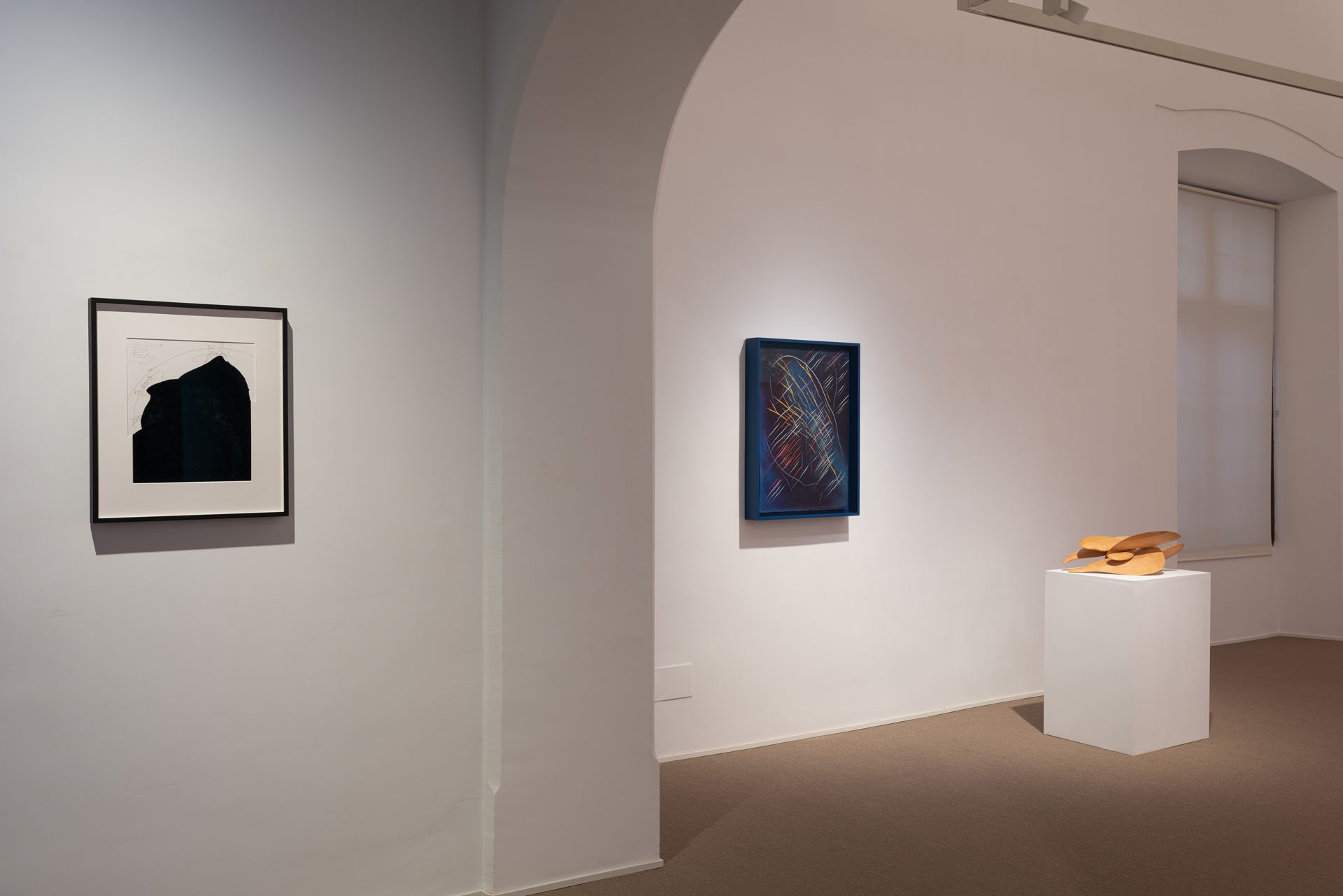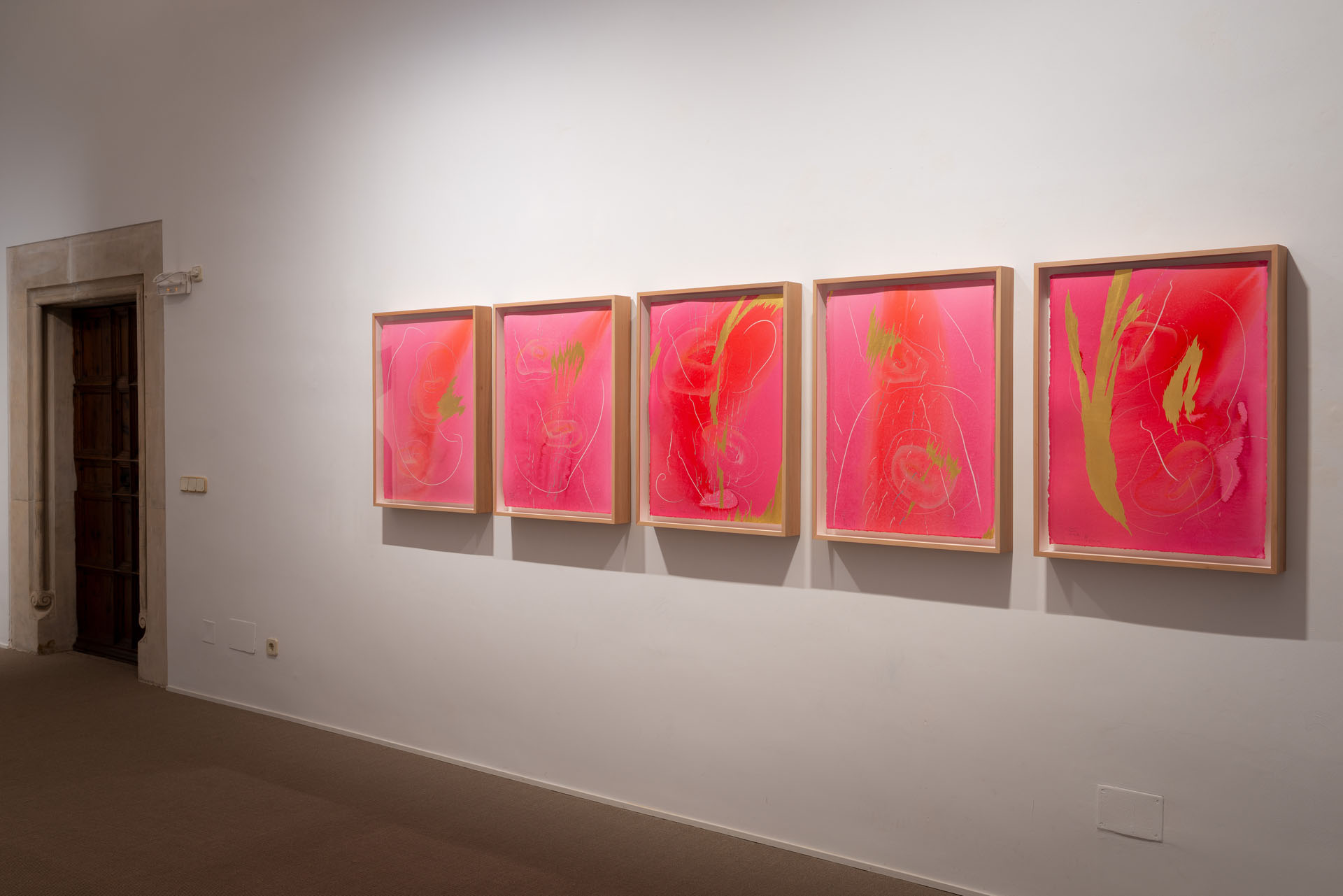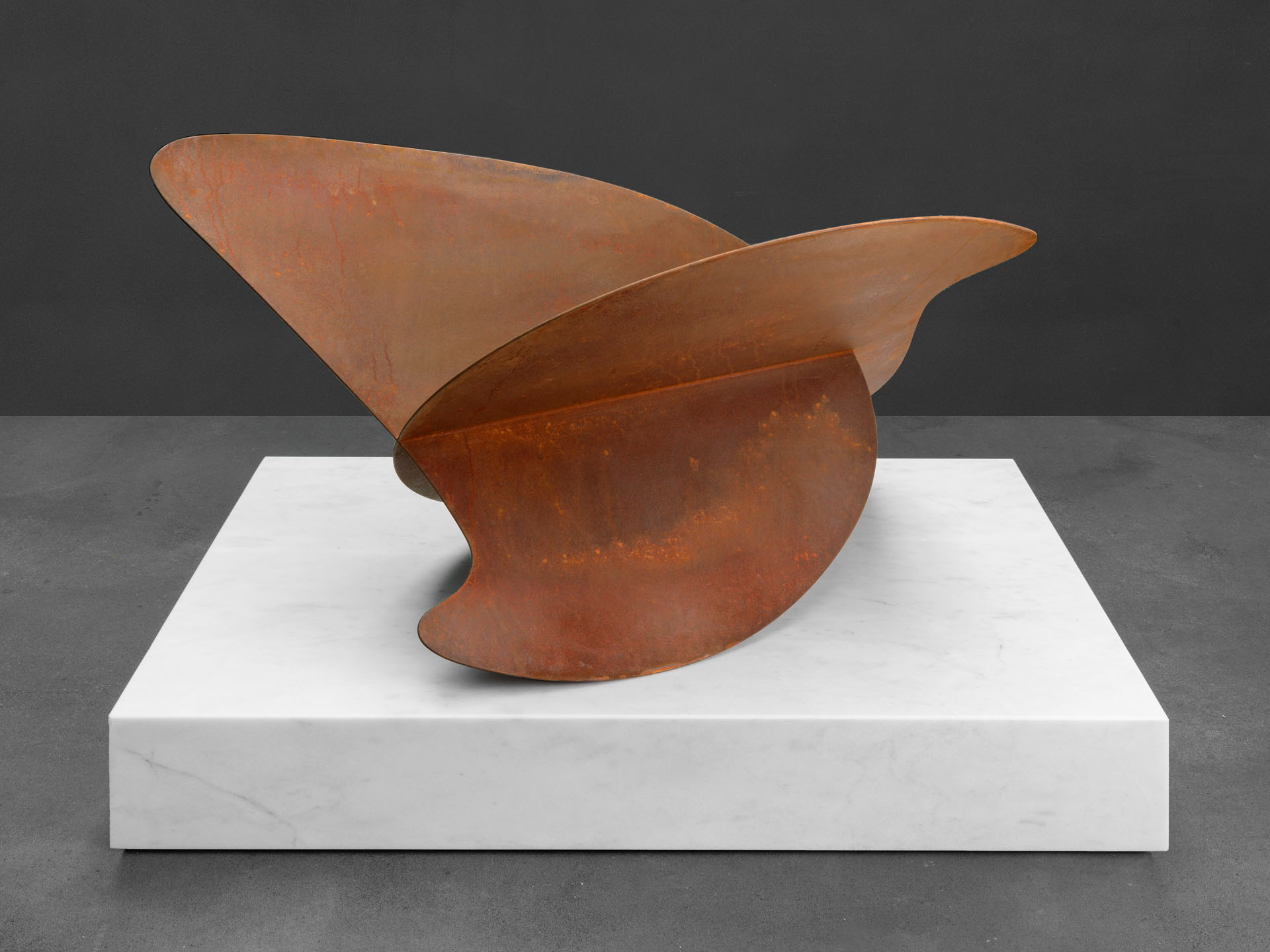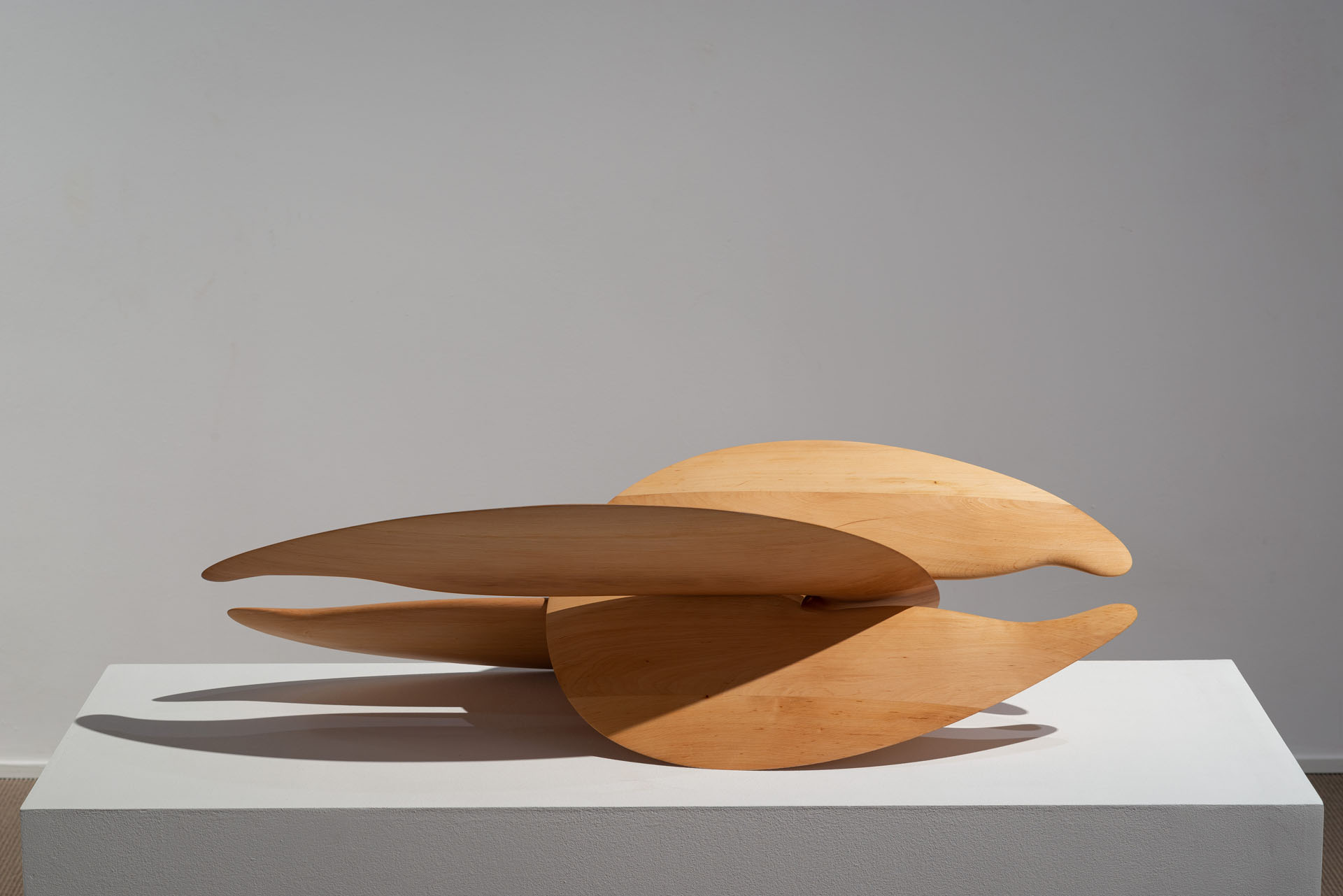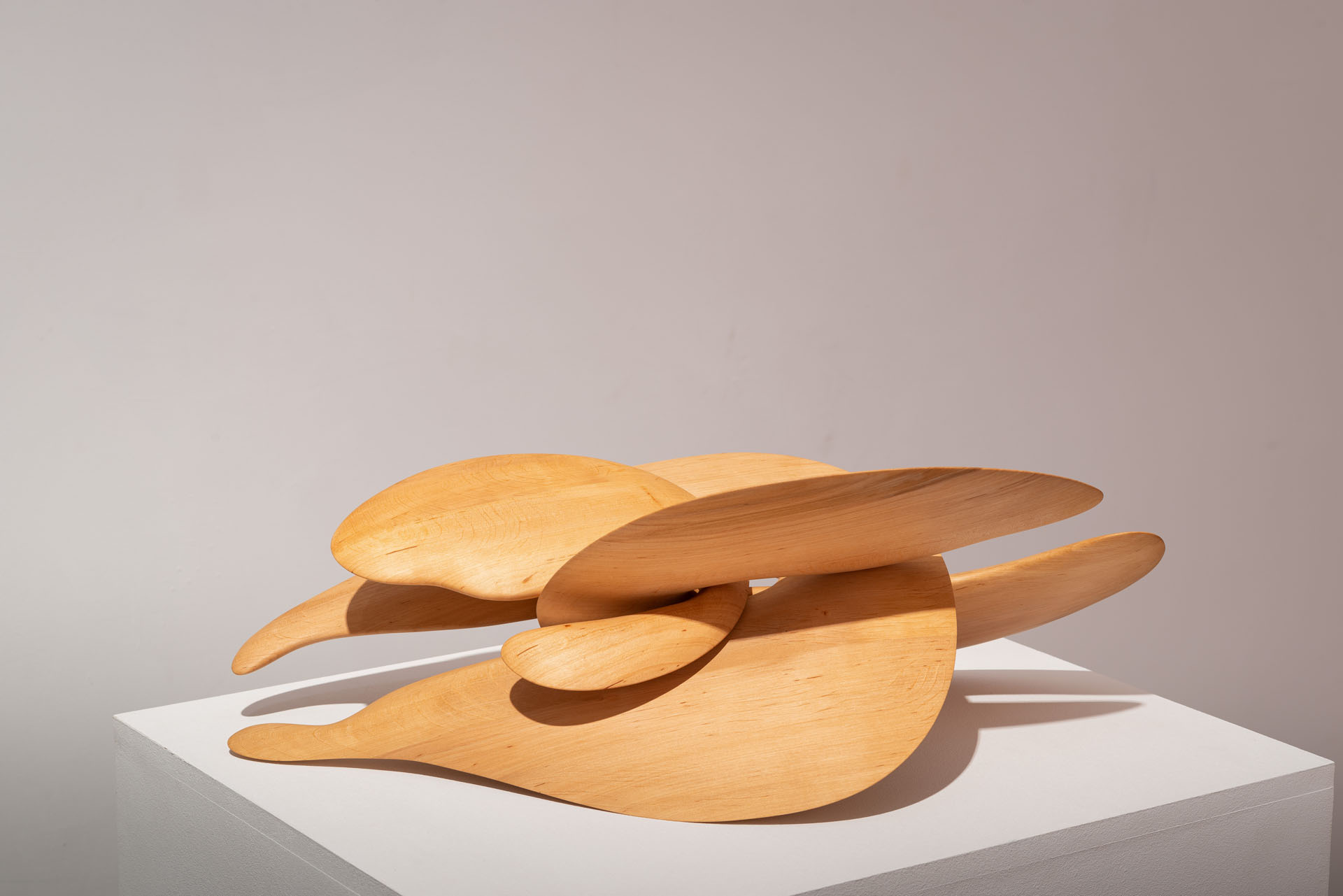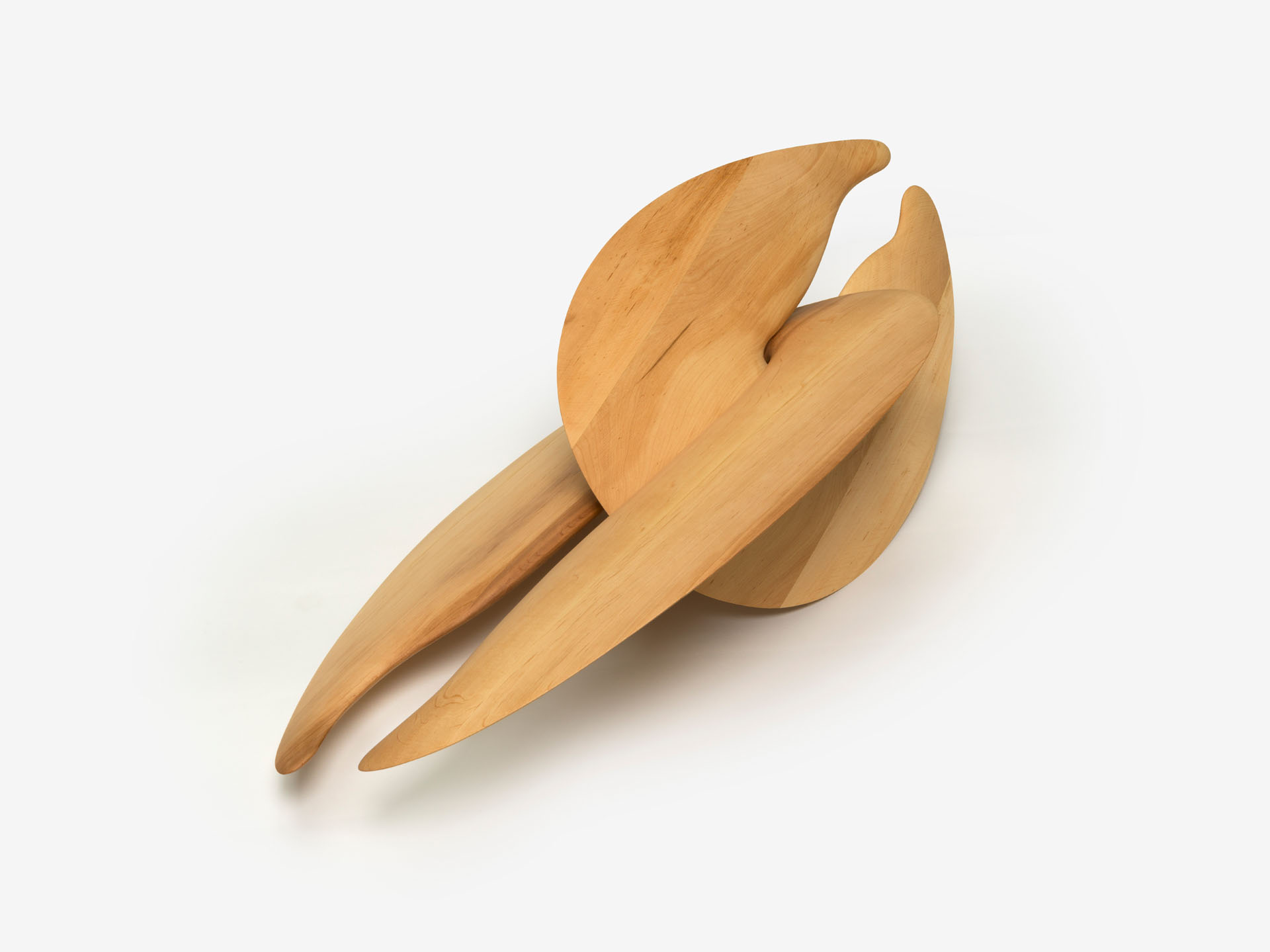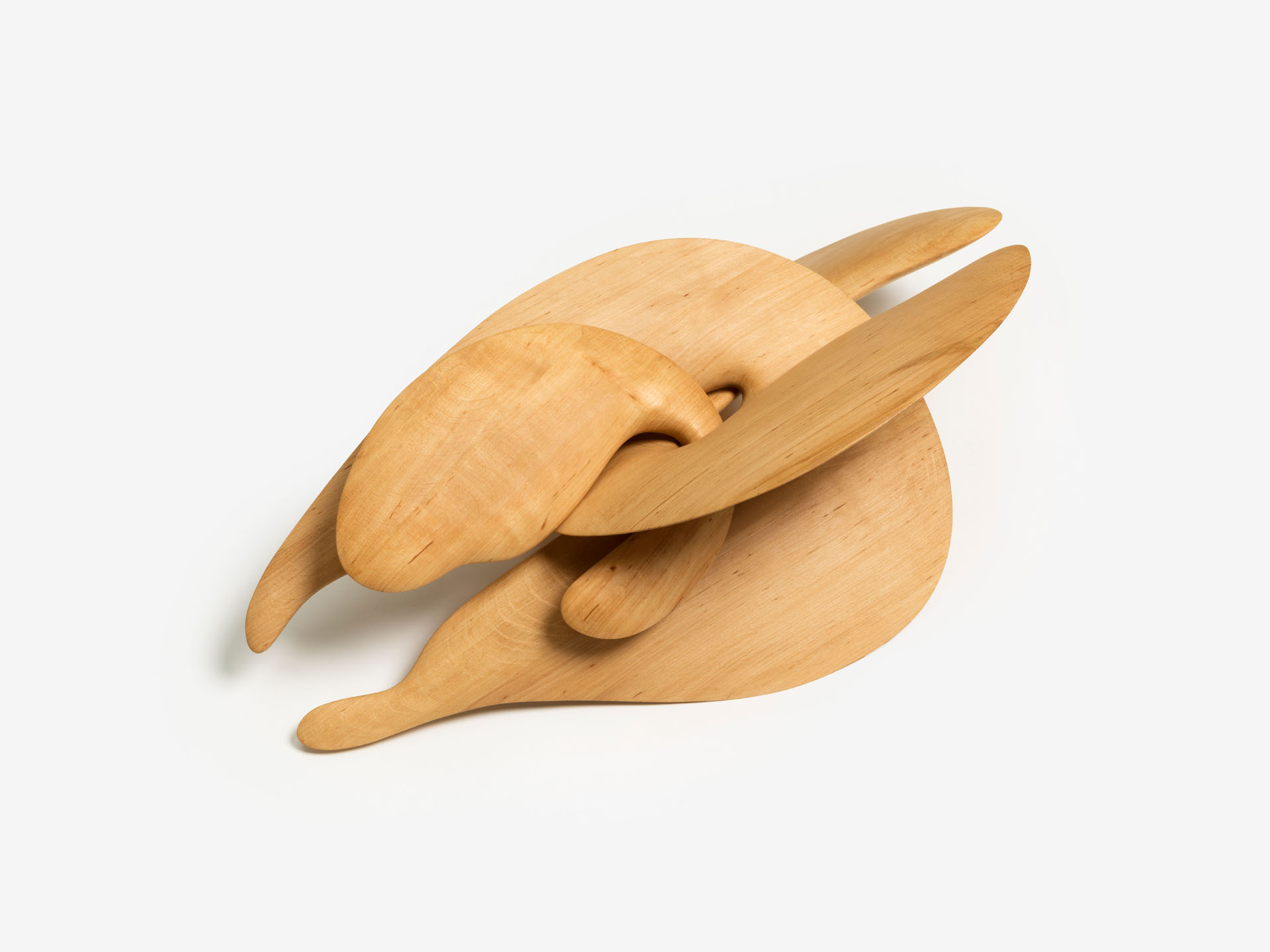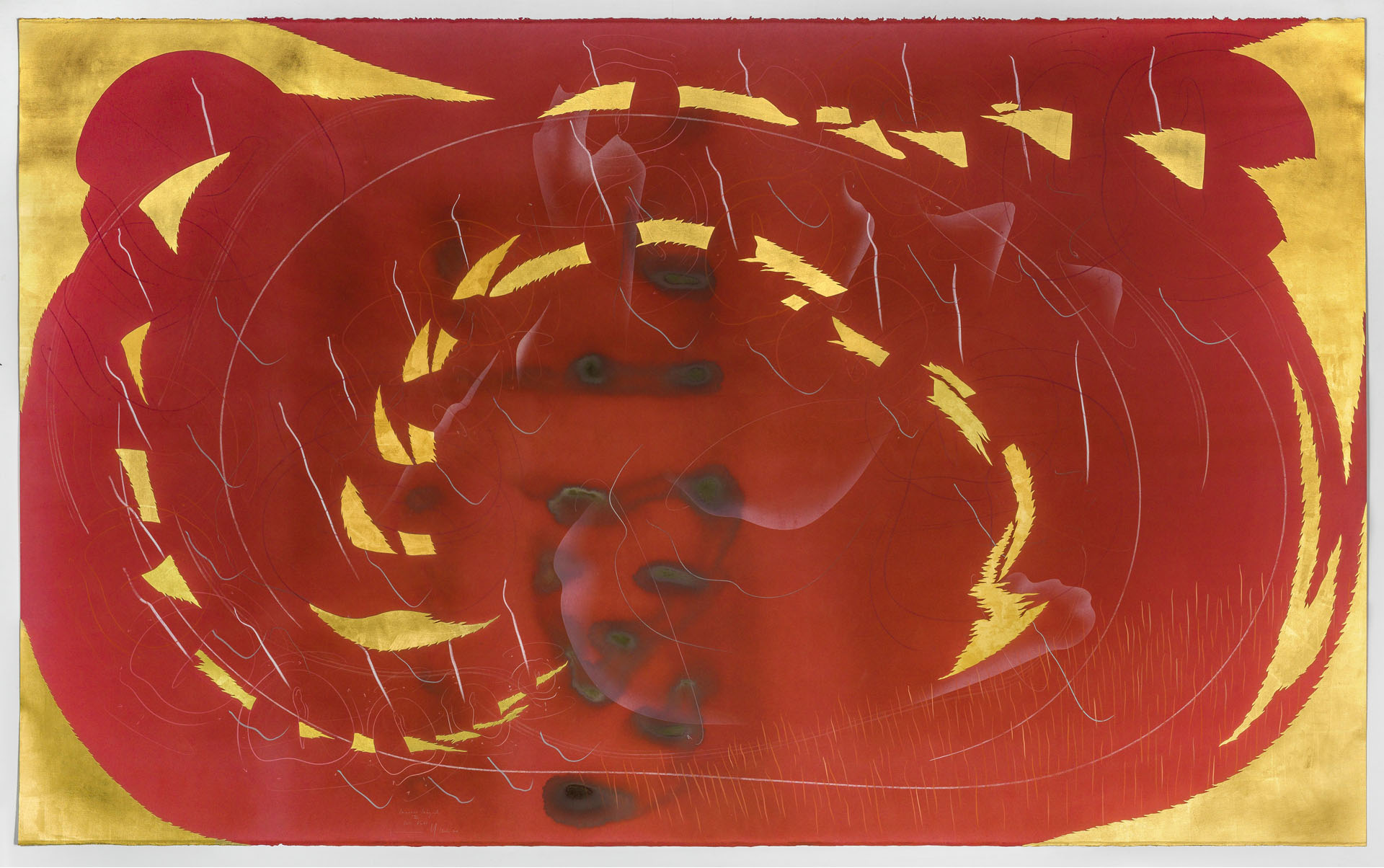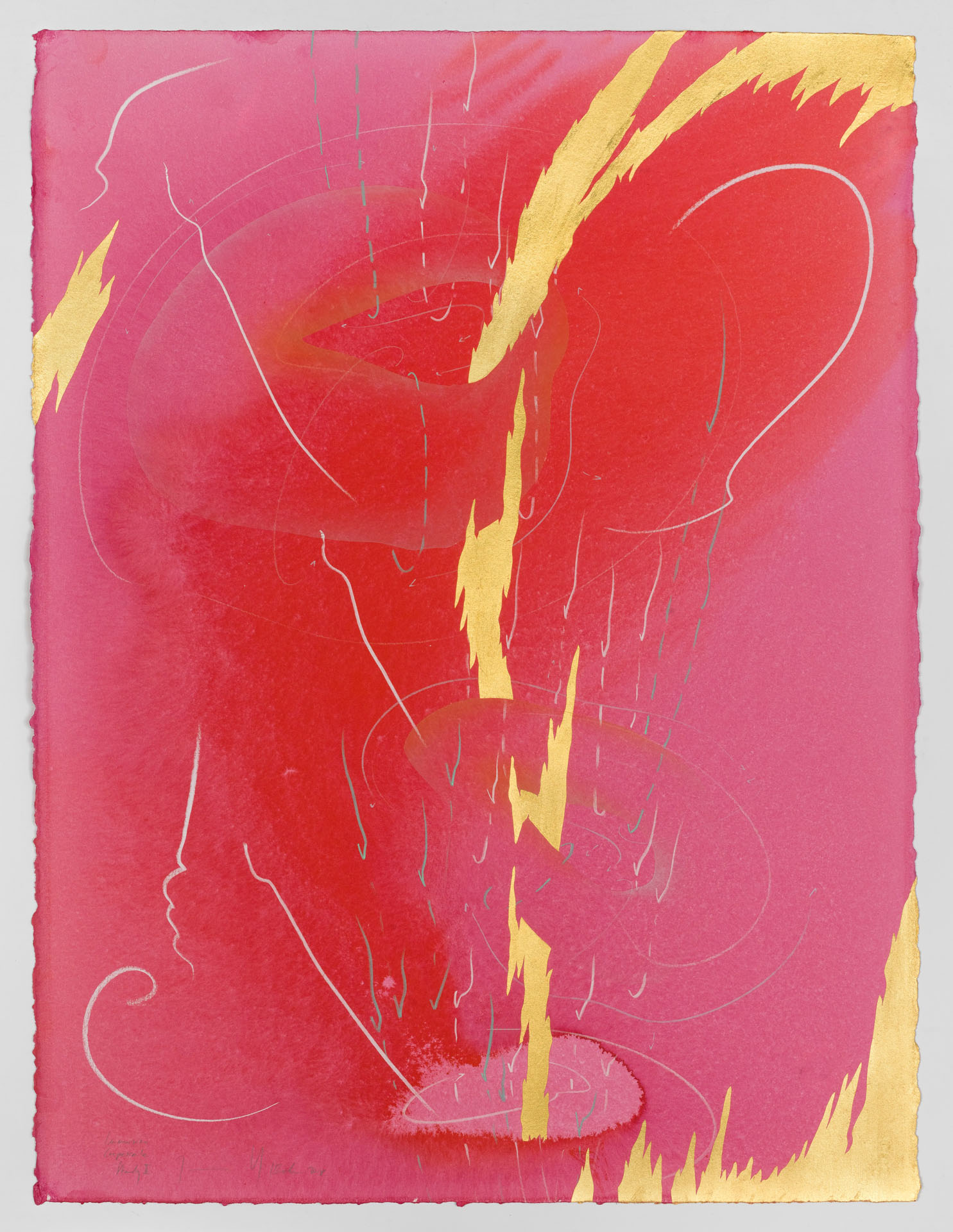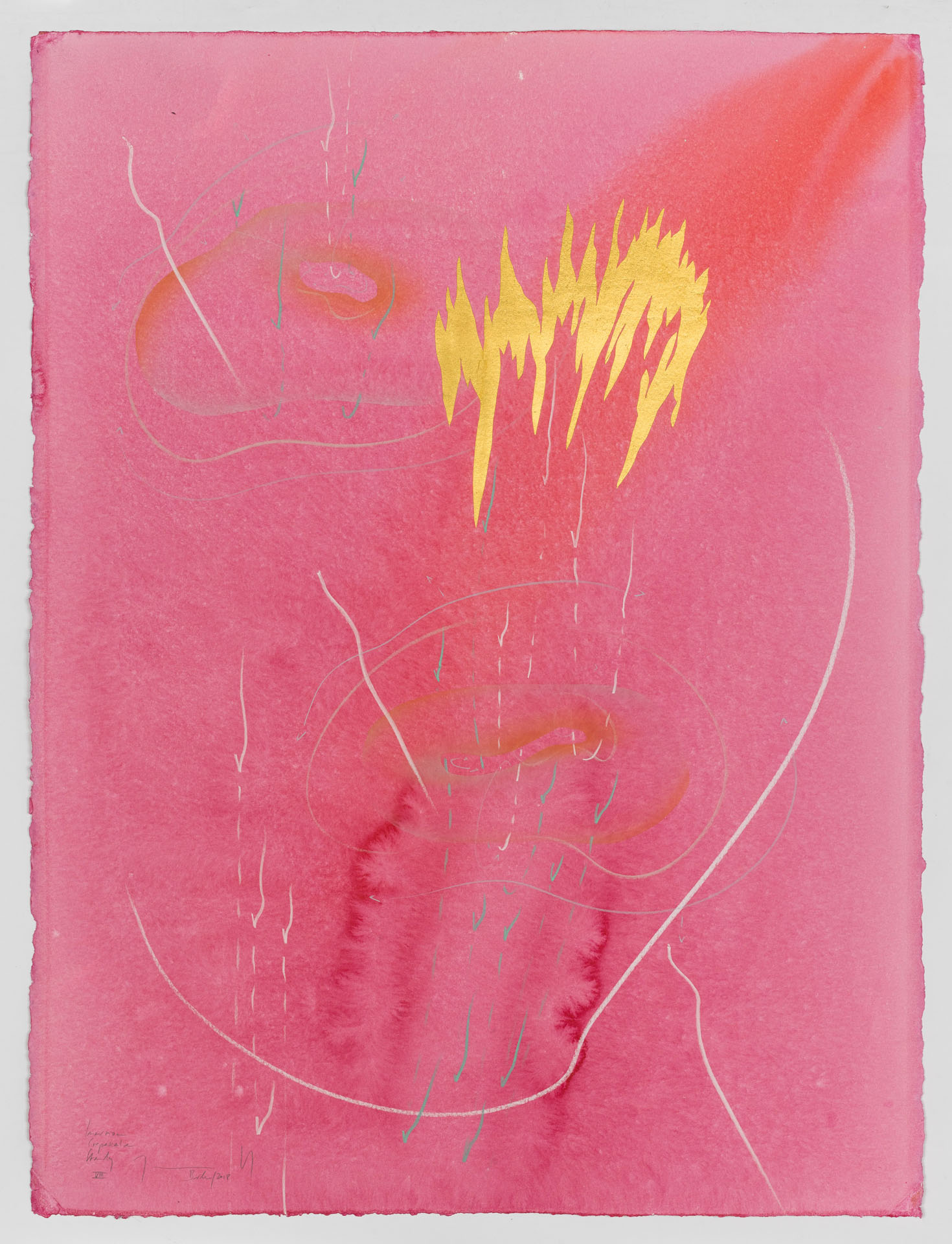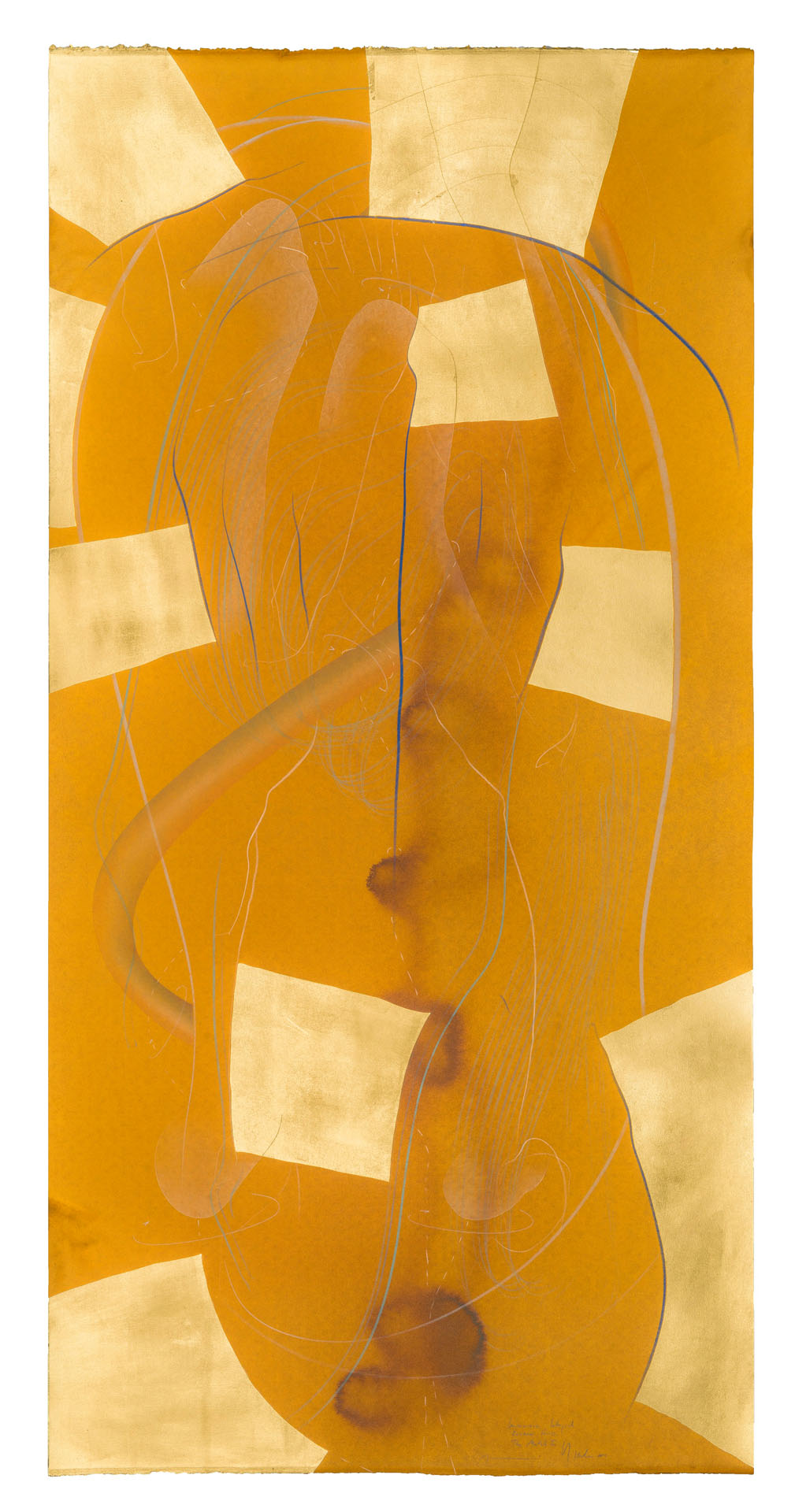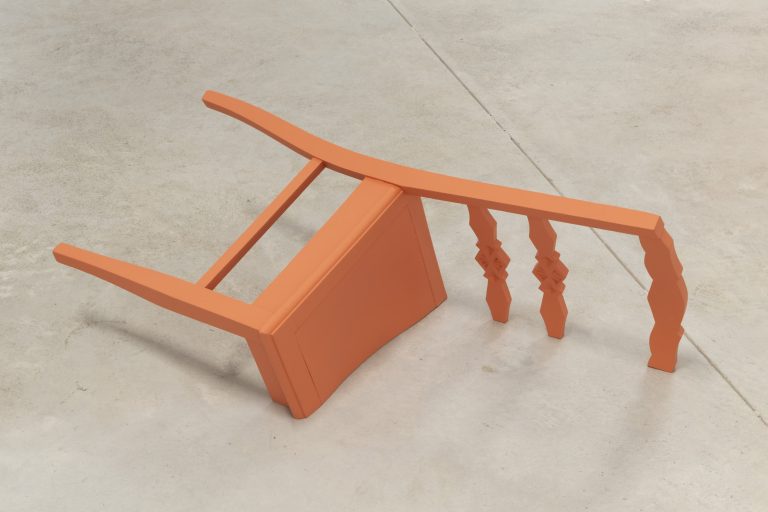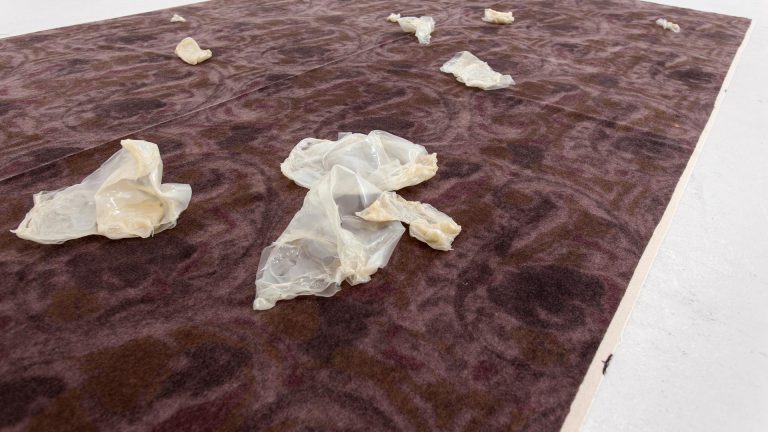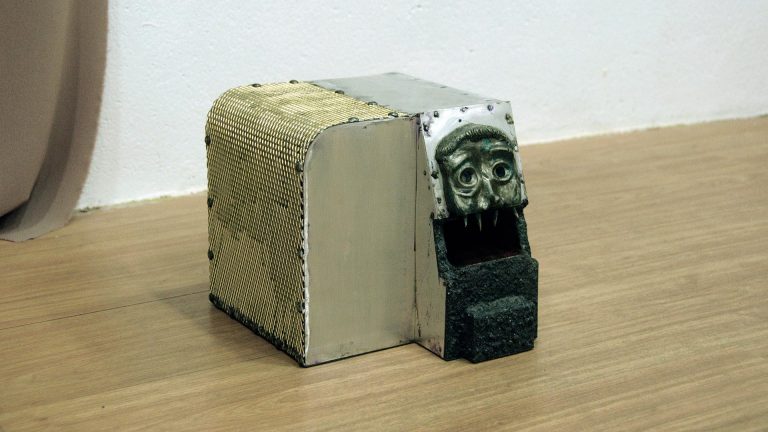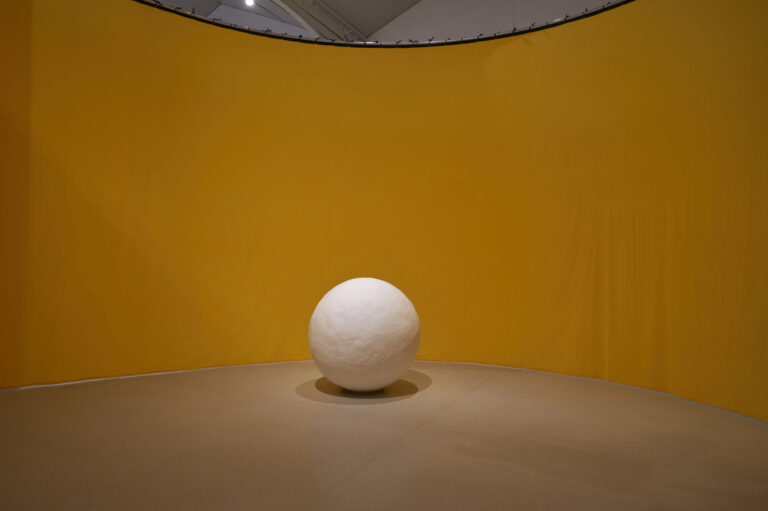Artist: Jorinde Voigt
Exhibition title: Inmerso
Venue: Galería Pelaires, Mallorca, Spain
Date: March 25 – May 20, 2022
Photography: ©Roberto Ruiz, ©Grimalt de Blanch / all images copyright and courtesy of the artist and Galería Pelaires
German artist Jorinde Voigt develops complex and idiosyncratic systems based on musical notation, philosophical texts and her own sensory impressions to create large-scale drawings that combine turbulent, expressive forms and algorithmic precision.
Voigt draws from her past experiences with philosophy, literature and music to explore the inner dynamics of perception, a recurring theme throughout her career.
In 2002, Voigt moved away from photography and began making the drawings for which she is known worldwide, which she describes as “projection surfaces, patterns of thought, designs for scientific experiments, notations, scores and diagrams.” Although rarely discussed in writings on the artist’s work, this distancing explains her idea of image and the now, which are particularly relevant to the genesis of Inmerso.
While photography’s claims to provide a direct and unmediated representation of reality have crumbled, its association with “reality” remains (despite the proliferation of altered digital images) because of the medium’s definition.
Voigt refers to her aversion to the perspective inherent in photography as the reason she turned to notation and drawing. And it was in doing this that she found a medium she could use to capture the “juxtaposition and simultaneity” of her experiences, a technique she has explored in more detail and polished with Inmerso.
Although Jorinde Voigt belongs to an art-historical genre that covers from the algorithmic patterns and accumulations of Hanne Darboven or Channa Hoewitz to the experimental scores of John Cage and György Ligeti, the singular fluidity and dynamism of her work lies in how her drawings (in both form and process) connect an inner world of experiences and references to the external systems that structure them.
While Voigt’s previous works often refer to specific cultural objects or texts (such as erotic Chinese art, Roland Barthes’ A Lover’s Discourse or Beethoven’s Sonatas, to name a few examples), Inmerso takes the process of perception itself as a starting point. The artist’s enquiry into the nature of perception goes deeper than the actual interest in vison (common to artistic practices that explicitly investigate the sensory universe, and perhaps the most privileged of all the senses). She seeks to develop appropriate ways of understanding the internal constitution of archetypal images, what lies behind what we see, and how such images can be collectively experienced or shared.
Colour determines the mood of each immersion. Voigt begins her series by soaking the white papers in colour, which she selects to capture a specific atmosphere or emotional state.
Likewise, the term “immersion” implies complete absorption and evokes various mental images: someone lost in thought, underwater, or learning to speak a foreign language.
The feeling of being immersed is something everyone has felt at one time or another, yet it is difficult to describe. An immersive experience takes hold of you. Immersion could be described as feeling so fully present that you are transported to another place: a kind of perceptual crossroads where every day phenomena envelop you and anchor you in the now. How could such a feeling be distilled and visually represented? Voigt has described Inmerso as a process of form-finding, a quest to make visible the invisible patterns of perception itself.
The series of sculptures entitled Dyade and Triade, which accompany the works on paper, are made of different materials, including copper, gold-plated stainless steel, corten steel and wood. These sculptures feature two or three round elements that intertwine into each other or interlock in opposite directions.
Each piece is a formal variation on the same theme, curved formations that obliquely resemble boomerangs, fortune cookies or crescent moons, and that have already been announced in her paintings, which function as an uneven mirror of their counterpart.
This mirror effect is enhanced in copper and gilded steel through materiality. When made with corten steel, the sculptures are reminiscent (in both form and material) of monumental public sculptures, although here they are represented on an intimate scale. Precisely one of the parameters governing Voigt’s approach is that her works may not exceed the length of a line that the artist is able to draw herself, as an extension of her own body.
Moreover, in the history of monumental sculpture, corten steel has often had a diminishing effect on the viewer. Just think of some of Richard Serra’s works. When passing through them, we feel the constriction of space and how insignificant we are compared to their grandeur. Voigt’s works, on the other hand, do not absorb us but meet us head-on, face to face.
With Dyade, a duality is generated through the act of contemplation. The spectator and the contemplated piece become perfect partners. Likewise, the sculpture itself is a whole consisting of two parts: two lines, two gestures, two movements and two moments in time.
Jorinde Voigt, Inmerso, 2023, exhibition view, Galería Pelaires, Mallorca
Jorinde Voigt, Inmerso, 2023, exhibition view, Galería Pelaires, Mallorca
Jorinde Voigt, Inmerso, 2023, exhibition view, Galería Pelaires, Mallorca
Jorinde Voigt, Inmerso, 2023, exhibition view, Galería Pelaires, Mallorca
Jorinde Voigt, Inmerso, 2023, exhibition view, Galería Pelaires, Mallorca
Jorinde Voigt, Inmerso, 2023, exhibition view, Galería Pelaires, Mallorca
Jorinde Voigt, Inmerso, 2023, exhibition view, Galería Pelaires, Mallorca
Jorinde Voigt, Inmerso, 2023, exhibition view, Galería Pelaires, Mallorca
Jorinde Voigt, Dyade 06, 2022, Corteen steel, 85.5 x 139 x 91 cm
Jorinde Voigt, Dyade 06, 2022, Corteen steel, 85.5 x 139 x 91 cm
Jorinde Voigt, Dyade 1, 2023, Alder wood, 2 parts, 30 x 42 x 95 cm
Jorinde Voigt, Dyade 1, 2023, Alder wood, 2 parts, 30 x 42 x 95 cm
Jorinde Voigt, Dyade 1, 2023, Alder wood, 2 parts, 30 x 42 x 95 cm
Jorinde Voigt, Dyade 1, 2023, Alder wood, 2 parts, 30 x 42 x 95 cm
Jorinde Voigt, Synchronicity III, 2015, Ink, India ink, feathers, oil chalks, pastel, graphite on cardboard, framed, 182.5 x 252 cm
Jorinde Voigt, Immersive Integral VI – Was bleibt, 2018, India ink, gold leaf, pastel, oil chalks and graphite on paper, 141 x 229.2 cm
Jorinde Voigt, Immersion Crepuscule Study II, 2018, Ink, India ink, gold leaf, pastel, oil chalks and graphite on paper, framed, (natural wood), 76.5 x 57.5 cm
Jorinde Voigt, Immersion Crepuscule Study VIII, 2018, Ink, India ink, gold leaf, pastel, oil chalks and graphite on paper, framed, (natural wood), 76.5 x 57.5 cm
Jorinde Voigt, Immersion Crepuscule Study IX, 2018, Ink, India ink, gold leaf, pastel, oil chalks and graphite on paper, framed, (natural wood), 76.5 x 57.5 cm
Jorinde Voigt, Immersion Crepuscule Study X, 2018, Ink, India ink, gold leaf, pastel, oil chalks and graphite on paper, framed, (natural wood), 76.5 x 57.5 cm
Jorinde Voigt, Immersion Crepuscule Study XII, 2018, Ink, India ink, gold leaf, pastel, oil chalks and graphite on paper, framed, (natural wood), 76.5 x 57.5 cm
Jorinde Voigt, Immersive Integral – Rainbow Series, The Match I, 2019, India ink, gold leaf, pastel, oil chalks and graphite on paper, artist’s frame, 140.7 x 69.7 cm
Jorinde Voigt, Immersive Integral – Rainbow Series, The Match II, 2019, India ink, gold leaf, pastel, oil chalks and graphite on paper, artist’s frame, 140.4 x 69.7 cm
Jorinde Voigt, Immersive Integral – Rainbow Series, The Match III, 2019, India ink, gold leaf, pastel, oil chalks and graphite on paper, artist’s frame, 140.4 x 69.7 cm
Jorinde Voigt, The Match III, 2019, India ink, gold leaf, pastel, oil chalks and graphite on paper, artist’s frame, 140.5 x 278.6 cm
Jorinde Voigt, The Match III, 2019, India ink, gold leaf, pastel, oil chalks and graphite on paper, artist’s frame, 140.5 x 278.6 cm



